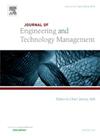二次电池的商业模式:选择可持续商业方案的综合框架
IF 3.9
3区 管理学
Q2 BUSINESS
Journal of Engineering and Technology Management
Pub Date : 2025-04-01
DOI:10.1016/j.jengtecman.2025.101874
引用次数: 0
摘要
在电动汽车和可再生能源技术快速发展的推动下,对电池的需求不断增长,导致人们越来越关注电池的生命周期管理。虽然电池可能会达到其主要使用寿命,但它们通常有第二次使用寿命的潜力,在最终回收之前提供有价值的服务。本文提出了一个为二次电池业务量身定制的综合商业模式框架,旨在指导电池生态系统中的利益相关者了解这一新兴领域的复杂性。通过详细的理论和实践行业洞察,该框架分为三个核心要素:价值主张、价值创造和交付以及价值获取。每个核心元素进一步分支为子元素,为涉众提供构建独特业务模型的模块化方法。本文还包括深入的价值分析、可持续性影响和利益相关者利益,提供了对二次电池业务的全面了解。讨论了对电池生态系统中主要利益相关者的实际影响,包括电池oem、再制造商、再用途商和经销商。本文对循环商业模式的理论做出了贡献,特别是与电池循环相关的理论。本文章由计算机程序翻译,如有差异,请以英文原文为准。
Business models for second life batteries: A comprehensive framework for selecting sustainable business options
The growing demand for batteries, driven by the rapid growth of electric vehicles and renewable energy technologies, has led to increased focus on their lifecycle management. While batteries may reach the end of their primary life, they often have the potential for a second life, offering valuable services before their eventual recycling. This paper presents a comprehensive business model framework tailored for the second life battery business, aiming to guide stakeholders in the battery ecosystem through the complexities of this emerging field. Developed through detailed theoretical and practical industry insights, the framework is segmented into three core elements: value proposition, value creation and delivery, and value capture. Each core element further branches into sub-elements, offering a modular approach for stakeholders to construct unique business models. The paper also includes in-depth value analyses, sustainability implications, and stakeholder interests, providing a holistic understanding of the second life battery business. Practical implications for key stakeholders in the battery ecosystem, including battery OEMs, remanufacturers, repurposers, and dealers, are discussed. The paper contributes to the theory of circular business models in general, with specific relevance to battery circularity.
求助全文
通过发布文献求助,成功后即可免费获取论文全文。
去求助
来源期刊
CiteScore
8.00
自引率
6.20%
发文量
29
审稿时长
>12 weeks
期刊介绍:
The Journal of Engineering and Technology Management (JET-M) is an international scholarly refereed research journal which aims to promote the theory and practice of technology, innovation, and engineering management.
The journal links engineering, science, and management disciplines. It addresses the issues involved in the planning, development, and implementation of technological capabilities to shape and accomplish the strategic and operational objectives of an organization. It covers not only R&D management, but also the entire spectrum of managerial concerns in technology-based organizations. This includes issues relating to new product development, human resource management, innovation process management, project management, technological fusion, marketing, technological forecasting and strategic planning.
The journal provides an interface between technology and other corporate functions, such as R&D, marketing, manufacturing and administration. Its ultimate goal is to make a profound contribution to theory development, research and practice by serving as a leading forum for the publication of scholarly research on all aspects of technology, innovation, and engineering management.

 求助内容:
求助内容: 应助结果提醒方式:
应助结果提醒方式:


